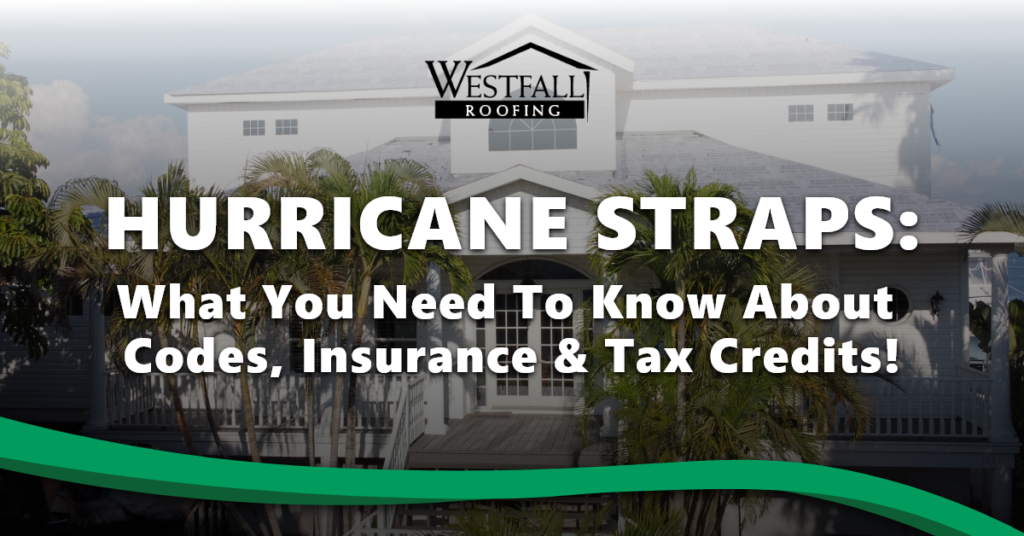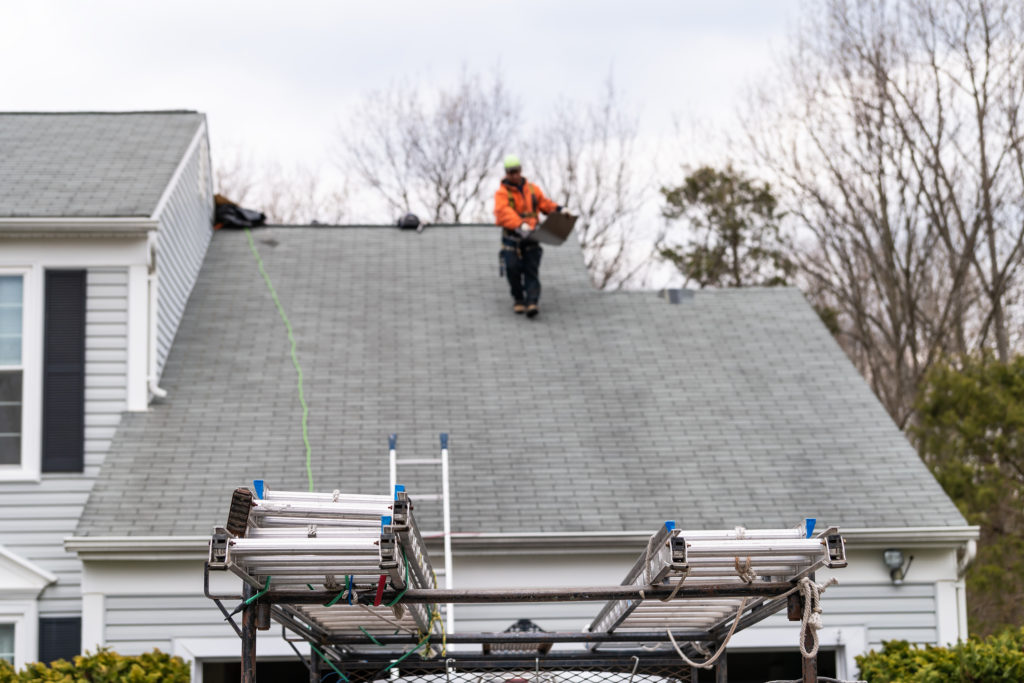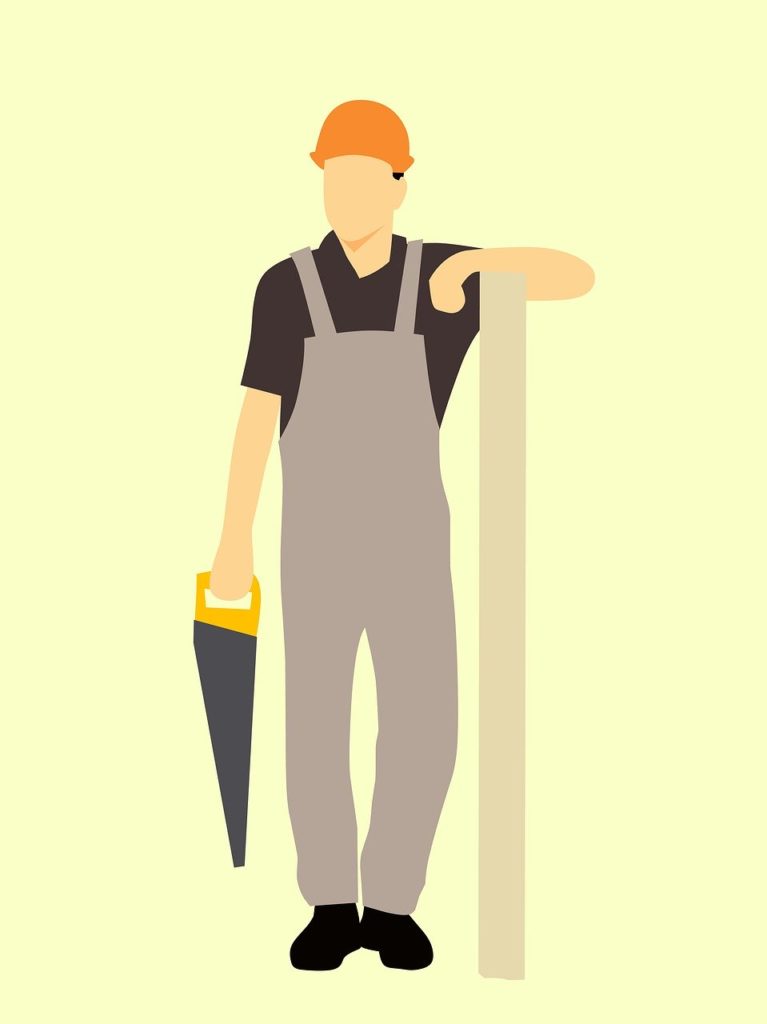Successfully Navigate The Homeowners Insurance Discount & Tax Credit Requirements
In Florida, the threat of hurricanes and high winds routinely affects your home’s safety and security. For this reason, insurance companies place significant expectations on homeowners to meet stringent requirements for impact resistance to their home’s foundation, roof (including hurricane straps), windows, and doors. By taking proactive steps to mitigate against catastrophic outcomes, you lessen the intensity of an adverse weather event.
Know The Ins & Outs Of Roof Replacement
At Westfall Roofing, we expertly replace roofs on existing homes. In Florida, when a roofing company installs a new roof, the process does not involve addressing structural components designed to increase wind and hurricane resistance. That service requires a licensed contractor to strengthen the roof-to-wall connection at each roof truss with a retrofit using clips, straps, or third nails.
When we replace a roof, frequently a wind mitigation inspection occurs soon after. The resulting report often will point out that the homeowner failed to install clips, straps, or third nails to meet insurance underwriting standards. The responsibility for this failure arises from a lack of understanding by the homeowner to proactively communicate with their insurance agent about what mitigation efforts need addressing.
Strengthen Your Home With Roof-To-Wall Connections
Your home represents your most precious asset and holds infinite sentimental value. Protecting your home against dangerous weather incidents requires careful planning. Many effective mitigation options exist to increase the likelihood that your home will withstand the worst. Insurance companies expect you to take the proper preventative measures to guarantee that you receive any available discounts or credits.
Four primary types of roof-to-wall attachments (or hurricane tie-downs) exist.
Toenail: The roof and wall attach to one another using nails driven at angles. Traditionally, most houses built pre-2001 connect roof trusses and walls via toenailing but do not further strengthen the roof-to-wall connection with clips or straps.
Clip (a/k/a anchor, fastener, bracket, strip, tie, or hurricane clip): A metal piece that joins your home’s roof to a wall truss without wrapping over the wall truss. Most houses built pre-2001 qualify for retrofitting clips to meet current insurance standards.
Single Strap (a/k/a single wrap or hurricane strap): A metal piece that wraps over the wall truss, with three nails securing the connection. A single strap provides additional strength compared to a clip and can be retrofitted in certain instances.
Double Strap (a/k/a double wrap or hurricane straps): Two separate metal pieces that wrap over the wall truss, with each metal piece secured by three nails. A double strap offers greater stability than a single strap.
Understand The Available Insurance Discounts & Credits
Insurance companies expect (but don’t necessarily require) homeowners to employ all available measures to make their homes more wind resistant. Accordingly, insurance carriers routinely offer premium discounts to homeowners for upgrading the roof-to-wall connections, including installing clips or straps. Before 2001, most houses used toenails (not clips or straps) to attach the roof and wall.
| Connection Type | Estimated Annual Insurance Premium Discount Percentage |
| Toenail | 0% (insurance providers typically do not offer a discount) |
| Clip | Up to 35%* |
| Single Strap | Up to 35%* |
| Double Strap | Up to 35%* |
* If the homeowner chooses a clip or strap, the clip or strap must have three nails securing the metal connector to the roof. If the clip or strap only has two nails, insurance carriers typically do not offer a discount to homeowners.
Frequently Asked Questions
- What if I have clips or straps, but only two nails connect the wall to some or all of my home’s roof trusses?
Generally, your insurance carrier will not provide a premium discount without three nails in every clip or strap. Additionally, every roof truss must have a clip or strap. Finally, your structure must have no more than a 1/2” sideways gap between connection points.
- Must I have a wind inspection report before obtaining homeowners insurance in Florida?
No. On average, the premium increases by 20% for the windstorm portion of your insurance policy without a wind mitigation inspection report. Most homeowners should acquire a wind mitigation inspection report and submit the findings to their insurance providers to obtain any discounts or credits provided statutorily.
- Can I prepare my own wind mitigation inspection report?
No. Florida law mandates that homeowners must involve a Florida-licensed professional in the construction industry to perform the wind mitigation inspection and prepare the report. Only licensed home inspectors, architects, engineers, or general contractors may facilitate a wind mitigation inspection.
- How do I obtain a wind mitigation discount in Florida?
- Consult your insurance agent regarding available premium discounts or credits.
- Hire a licensed professional to conduct a wind mitigation inspection and provide a report.
- Take corrective action if necessary. You may need a contractor to retrofit clips or straps (or add a third nail to each connection.)
- Submit the report to your insurance provider.
- Can I retrofit clips or straps on my existing home to qualify for insurance premium savings or credits?
Yes. However, before retaining a professional to install clips or straps, consult your insurance carrier to determine if the cost outweighs the benefit. The expense to retrofit may not be worth the time or effort.
West Central Florida residents, trust our expertise to help you with your roofing needs. Schedule your free consultation today.





